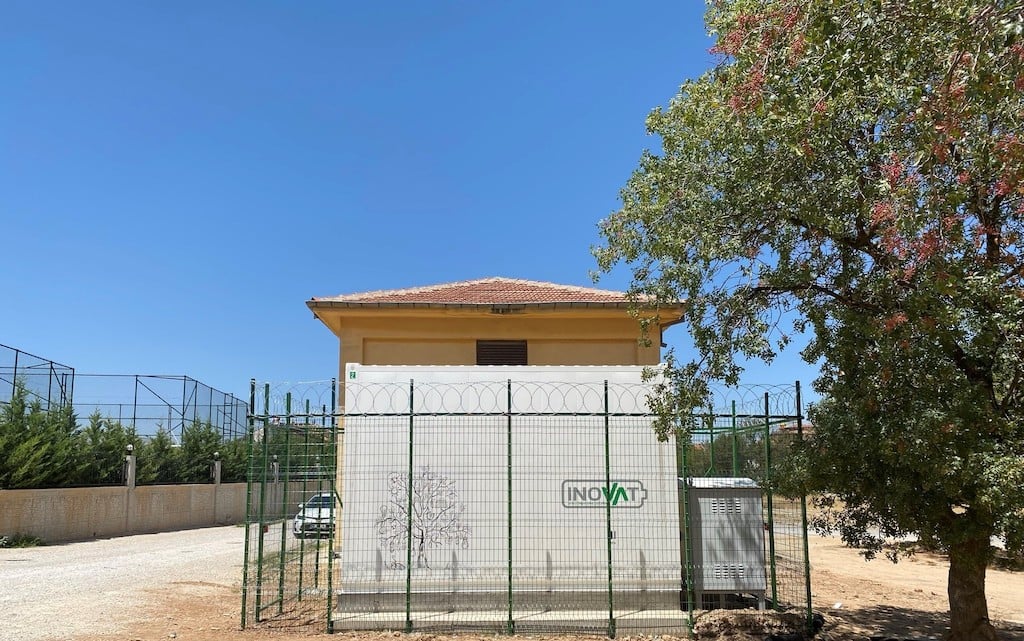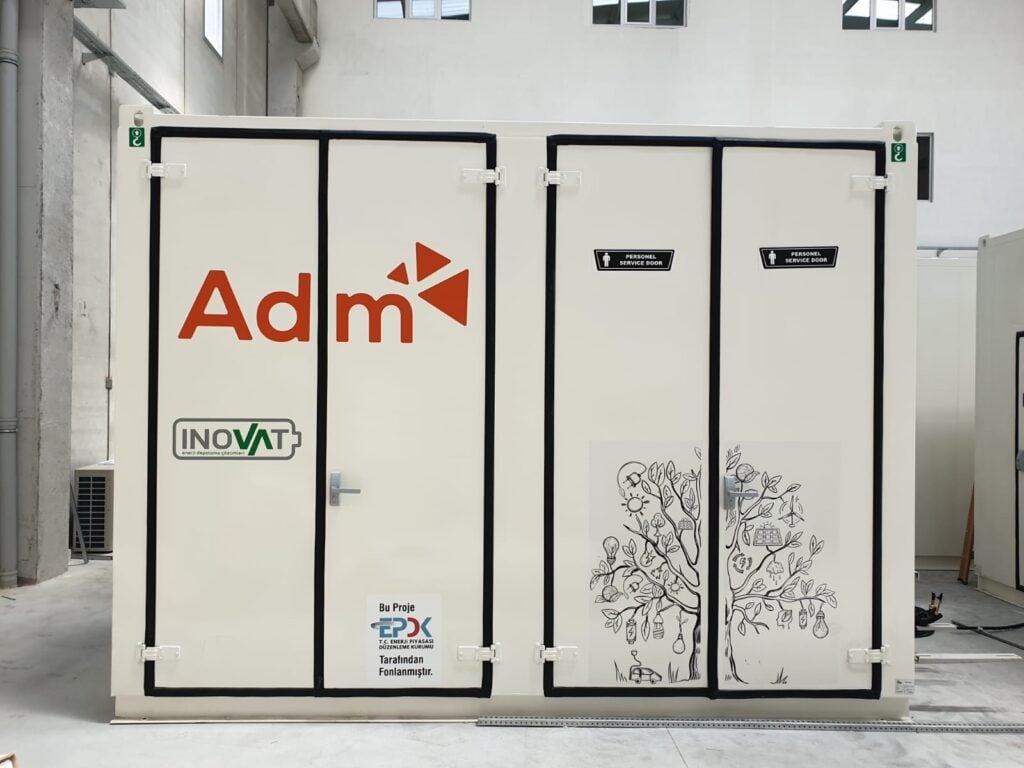
With a commitment to add 1GW each of new solar PV and wind each year, Turkey’s need for energy storage is coming sooner rather than later.
The country’s energy regulator has already acted to enable market participation for storage and companies on the ground are ready to deliver, says Can Tokcan, managing partner at Turkish energy storage EPC Inovat.
Enjoy 12 months of exclusive analysis
- Regular insight and analysis of the industry’s biggest developments
- In-depth interviews with the industry’s leading figures
- Annual digital subscription to the PV Tech Power journal
- Discounts on Solar Media’s portfolio of events, in-person and virtual
Turkey has around 97GW of electricity generation capacity — in 2011 it had about half of that. It currently has about 9GW of solar and about the same amount of wind connected to the grid and is committed to the gigawatt annual targets in the years 2017 to 2027.
Feed-in tariffs are available for wind, solar, biomass, hydro and geothermal and in 2020, according to official figures, 4,900MW of renewables were deployed, while almost no new fossil fuel generation came online.
As with other markets, the entry point for battery storage has been a number of relatively small projects, which serve as demonstrations and assessment tools to figure out the right use cases and direction of the market.
In April 2021, Energy-Storage.news reported on the commissioning of Turkey’s first grid-connected battery storage project, a 500kW/500kWh system which was designed to help smooth out local peaks in supply and demand for a town in the north of the country.
But it’s in regulation that the biggest steps have been taken.
“What we’re seeing in terms of regulation is going to speed up the markets pretty fast,” Tokcan says.
A few weeks after that first project went online, the national Energy Market Regulatory Authority (EMRA) made changes to enable investment, ruling that energy companies should be allowed to develop energy storage in three distinct segments:
- Energy storage facilities integrated with energy generation
- Integration with energy consumption
- Standalone energy storage
“The general expectation is that Turkey will install about 2GW of batteries in the next 10 years,” Can Tokcan of Inovat says.
“Turkey is a big industrial country. But there are still maybe only 2MW of storage installed. However, we are having lots of discussions and actually we have a pipeline of about 100MW of projects that we’re discussing for storage applications. So we can see that it’s going to pick up really quick and the potential is there.”
Regulations open up market for wide range of use cases
In the first category above, storage with generation, licenses for energy generation assets can be updated to include energy storage — without renewable generators losing their feed-in tariff. Solar facilities in Turkey usually have about 1.2 to 1.3 times more installed capacity than the amount they can feed in to the grid.
The difference between the megawatt-peak and the megawatt limit of the connection to the grid can be stored and sold with the current feed-in tariff, which builds the business case, Tokcan says.
There are several solar PV projects of more than 100MW each, being built around Turkey as we speak. Inovat expects to see some energy storage integrated with some of those solar farms.
“It’s very romantic to have as much renewable energy as possible. But it also creates lots of problems for the grid in terms of instability. Like the rest of the world, the more we invest in renewables, the more we are losing ‘on demand’ power,” Tokcan says, highlighting the “critical role” energy storage plays in that dynamic.
Category two, energy storage systems integrated with energy consumption, will likely be at large industrial facilities that want to incorporate storage to enable more renewables, add backup power or resolve power quality issues and arbitrage on their electricity costs through peak demand reduction or arbitrage.
Inclusion in EMRA’s ruling of the final category, standalone energy storage, means energy storage can participate in ancillary services, as has been successfully proven in the UK, much of Europe, parts of the US and Australia.
Industrial facilities with battery storage systems large enough to meet the 10MW minimum technical requirement for ancillary services could also participate.
The Turkish market is “now fully open,” Tokcan says: “If you wanted to invest in 10MW, 20MW of energy storage in Turkey, you are fully able to participate in ancillary services”.
The ancillary services market has been opened up for energy storage in a “completely public and transparent process,” he says.
In fact, all of the energy markets in Turkey are in general operated in a transparent way, from day ahead, intraday and ancillary services to the imbalance markets, Tokcan says. Pricing data, generation data and consumption data are all available to be viewed and Inovat is currently modelling the financial return for participating in primary frequency response for a number of potential projects.
Although Turkey is interconnected with grids in Europe, the transmission system operator (TSO) Turkish Electricity Transmission Corporation (TEIAS), has decided that for frequency response, rather than building additional infrastructure to connect its high voltage lines to European grids, it would be better to install energy storage systems to do frequency response locally.
TEIAS has released its technical requirements for energy storage to participate in frequency services already. The TSO is also aware that it operates the third longest grid network in Europe and energy storage could be a good tool for solving issues at various points on the system.

‘Small but significant’ projects for distribution companies
Inovat has built four battery energy storage system (BESS) projects in Turkey to date. These are pilot, R&D projects built for different electric distribution companies. They range in size from 336kWh to 448kWh.
“The size is relatively small, of course, but it’s significant, considering that it’s one of the first few applications in Turkey,” Tokcan says of the projects.
The regulatory authority provides funding for distribution companies in Turkey and the outcome of Inovat’s projects could create the opportunity for energy storage investments to be partially funded by the government, he claims.
Turkey’s 21 distribution companies are privatised. However, investments they make in building out or renewing infrastructure are paid for through a government ‘Capex support programme’.
“After these projects, storage investments will also be included in the list for Capex support; which means that if the distribution company is able to show that installing a storage facility is actually deferring investments, comparable investment, then it will be funded by the government.”
So it seems there are multiple avenues through which energy storage can be invested in already at this early stage in the Turkish market’s development.
Can Tokcan says it is great to see that companies from outside Turkey are interested in the market, but believes the market has some fairly high barriers to entry. Inovat’s main competitors will be other Turkish companies, at least for the time being, he says.
Grid codes are fairly unique and distribution companies and the TSO have very different specific requirements. Even SCADA integration is itself a challenge and these and other aspects “need to be addressed delicately by a local team,” Tokcan says.
“The site work and installation has to be done with a local team clearly, because a foreign company coming to Turkey — a big EPC company, let’s say — and finalising the project by itself, is close to impossible. Of course they can send a finished product to Turkey, but there will still be the need for a local team to finalise the installation and the connection.”
Inovat is a subsidiary of Turkish holding company Tetico, which is involved in numerous industrial sectors from renewable energy investment to defence, aviation and entertainment technology. As well as being an EPC, the energy storage company manufactures its own systems equipment, claiming to make everything except the battery cells and inverters.
Its factory in Ankara can assemble 200 energy storage system enclosures a year, making products for residential, commercial and industrial (C&I) and utility-scale battery storage, equipped with Inovat’s own energy management system (EMS).
Due to their R&D nature, the handful of projects Inovat has already done also cover a multitude of use cases. These include batteries that stack applications like peak demand management and VAR support, microgrid and islanding capabilities and several more, giving the company valuable experience in this young market.
Progress at bigger picture level
From a bigger picture perspective, Turkey has plenty of reasons to invest in energy storage.
Most of the fossil fuels burned for energy in the country are imported. The International Energy Agency (IEA) noted in 2021 that 93% of its oil and 99% of its gas was imported. Air pollution and carbon emissions from coal use remain significant, with the use of locally-sourced coal often prioritised over other imported fuels.
A 4,800MW nuclear plant will go into service in 2023, helping to diversify the national energy mix, and reducing primary energy consumption is also a focus for policies like Turkey’s National Energy Efficiency Action Plan (NEEAP), aiming to reduce consumption across several sectors by 14% between 2017 and 2023.
And as Can Tokcan points out, the history of the solar industry in Turkey is only about a decade long, but has come a long way since the early 2010s. The IEA said renewable power generation took a 44% share of total power generation in 2019, exceeding the national 2023 target of 38.8%.
Yet the IEA said in 2021 that the country could go much further with its renewable energy deployment targets given the considerable resources Turkey has.
The ongoing liberalisation of gas and electricity markets is improving their transparency, which as Tokcan alludes to is making it easier for energy storage to compete. EMRA’s new regulations also allow R&D energy storage projects of up to 1MW to be built by universities, technology development centres and industrial zones, which is yet another way the use cases for energy storage could be investigated in Turkey.
Creating a domestic market could also enable Turkish companies to be competitive internationally too, Can Tokcan claims.
“Logistically speaking and technically speaking, creating these [energy storage] solutions in Turkey is actually quite feasible. Because of the [low] cost, but also because of high quality production and high quality engineering.”

